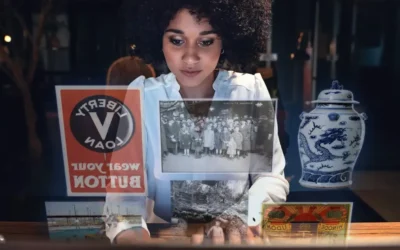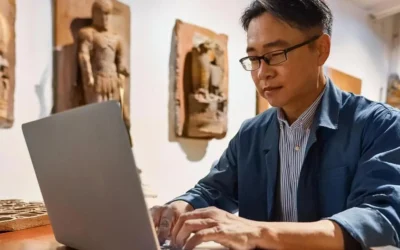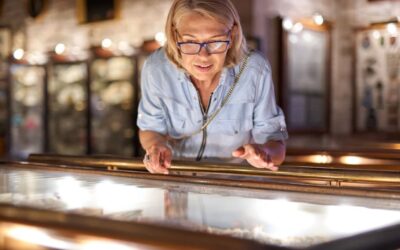Who are the Stakeholders in Museum Digital Projects?

Rachael Cristine Woody
Regardless of whether digitization projects take place as an every-day operation or as-needed, a museum will always have stakeholders in their digitization work. Sometimes we think of stakeholders only in terms of their relationship with the museum at large. What is less common is for museum staff to think about stakeholders involved with specific work. Museum digital projects are one area where stakeholders should be thought of as a priority.
Museum Digital Projects Stakeholders
Stakeholders can be both internal and external, so be sure to think about both when identifying who the museum digital project stakeholders are.
Internal
Staff: Fellow staff members who research and use the collections (physically and digitally). The most common is the museum curator, but the staff stakeholder can also be the director, a development officer, educational coordinator, etc. Viewing digital objects and object information online is more convenient (and sometimes more available) to staff than the physical methods, and prioritizing digital projects to support their work will be appreciated.
Board Member: The Board of a museum may also have an interest in digital projects, especially if the project helps fulfill strategic plan initiatives or support other areas of museum work (such as outreach or education). Keeping the Board in mind and apprised of museum digital projects taking place will help them develop more effective strategies with digital projects in mind.
External
Patrons: Patrons are typically the number one stakeholder museum staff envision. Patrons are visitors who visit the museum in-person or online. They can be regular visitors or one-time visitors and both should be considered when developing and prioritizing museum digital projects to meet expectations. Please see Lucidea’s post Museum Digital Collection Users & Types for more information on this topic.
Researchers: Researchers come in two forms: 1. The casual researcher who engages with the digital material for personal reasons and tends to use the digital content for enjoyment or hobby purposes; and 2. The academic researcher who engages with the material for professional reasons and tends to need digital materials for work product.
Communities: There are two forms of community stakeholders: 1. Communities connected to the collection who have very personal and historical ties to the materials; and 2. Communities that coexist locally with the museum who may rely on museum services to fill education and enjoyment needs. Both communities are important stakeholders given their coexistence with the museum and special care should be taken to understand their needs and expectations.
Remember: If the collection involves objects created by an existing community it’s critical to respectfully engage with that community from the beginning. Please see Lucidea’s post Responsible Practices for Working with Communities and Collections for more information.
How to Engage with Stakeholders
For many museum professionals, engaging with museum stakeholders may not be a normal part of the job. While it can be intimidating at first, it’s incredibly beneficial to begin conversations with your stakeholders so that you can understand needs related to your work.
Here are my tips for how to get the stakeholder conversation started:
- Begin with a light phone conversation or chat over coffee
- Invite them to your work space to describe what you do with visuals and show them the technology
- Visit their space and listen to their experiences interacting with the museum’s digital offerings and learn what their needs are
What’s Next?
Once you’ve met with stakeholders and have observed their questions, concerns, comments, and needs, spend time reflecting upon the information you’ve gathered. Brainstorm ways in which the museum’s digital projects can help meet the greatest overlap of stakeholders’ needs. Does the digitization process need to be tweaked? Have you identified a different digital priority the museum hasn’t considered yet? Form ideas and project proposals and run them by stakeholders. If multiple stakeholders are excited by your ideas you know you’re on the right track!

Rachael Cristine Woody
Museum consultant Rachael Cristine Woody advises on museum grant writing strategies and collections management for a wide variety of clients. Read more of Rachael’s posts on museum strategies for success. Learn about Lucidea’s Argus solution for museum collections management and digitization.
Similar Posts
How Archives Can Enrich Museum Collections Online
Staffed archives are in constant motion in their attempt to provide and broaden access to the archival collections.
How to Enhance Museum Collections Online with New Information
One of the wonderful things about museums is that the learning never stops. There are always projects, exhibits, and programs in development that serve as constant instigators of research.
How to Enhance the Museum Object Record with Immediately Available Information
This month’s series focuses on the enhancement of museum object data using “hidden” troves of information. Hidden is in quotes because the information exists and often is not hidden—it just hasn’t been gathered for inclusion in the museum Collections Management System (CMS).
Where the Gaps Live with Traditional Museum Object Cataloging
Standard museum cataloging leverages the usual set of fields that are considered best practice. We tend to refer to this information as “the tombstone information,” meaning it is clear and concise in communicating the “need to know” information.




Leave a Comment
Comments are reviewed and must adhere to our comments policy.
0 Comments